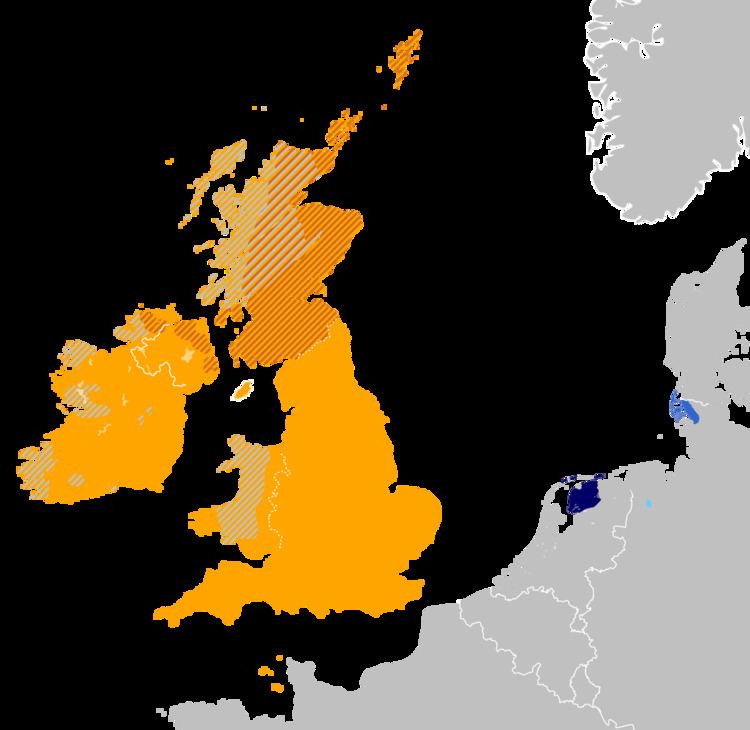Subdivisions: AnglicFrisian | Glottolog: angl1264 | |
 | ||
Geographicdistribution: Originally England, Scottish Lowlands and the North Sea coast from Friesland to Jutland; today worldwide Linguistic classification: Indo-EuropeanGermanicWest GermanicAnglo-Frisian | ||
The Anglo-Frisian languages is the group of West Germanic languages that includes Anglic and Frisian.
Contents
The Anglo-Frisian languages are distinguished from other West Germanic languages by several sound changes: the Ingvaeonic nasal spirant law, Anglo-Frisian brightening, and palatalization of /k/:
The early Anglo-Frisian and Old Saxon speech communities lived close enough together to form a linguistic crossroads which is why they share some of the traits otherwise only typical of Anglo-Frisian languages. However, despite their common origins, English and Frisian have become very divergent, largely due to the heavy Old Norse and Norman French influences on English and similarly heavy Dutch and Low German influences on Frisian. The result is that Frisian now has a great deal in common with Dutch and the adjacent Low German dialects, bringing it into the West Germanic dialect continuum, whereas English has stronger North Germanic and Romance influences than the languages on the mainland.
Classification
The Anglo-Frisian family tree is:
Anglo-Frisian developments
The following is a summary of the major sound changes affecting vowels in chronological order. For additional detail, see Phonological history of Old English.
- Backing and nasalization of West Germanic a and ā before a nasal consonant
- Loss of n before a spirant, resulting in lengthening and nasalization of preceding vowel
- The present and preterite plurals reduced to a single form
- A-fronting: WGmc a, ā → æ, ǣ, even in the diphthongs ai and au (see Anglo-Frisian brightening)
- palatalization of Proto-Germanic *k and *g before front vowels (but not phonemicization of palatals)
- A-restoration: æ, ǣ → a, ā under the influence of neighboring consonants
- Second fronting: OE dialects (except West Saxon) and Frisian ǣ → ē
- A-restoration: a restored before a back vowel in the following syllable (later in the Southumbrian dialects); Frisian æu → au → Old Frisian ā/a
- OE breaking; in West Saxon palatal diphthongization follows
- i-mutation followed by syncope; Old Frisian breaking follows
- Phonemicization of palatals and assibilation, followed by second fronting in parts of West Mercia
- Smoothing and back mutation
Comparison
These are the words for the numbers one to ten in the Anglo-Frisian languages:
* Ae /eː/, /jeː/ is the adjectival form used before nouns.
Alternative grouping
Ingvaeonic, also known as North Sea Germanic, is a postulated grouping of the West Germanic languages that comprises Old Frisian, Old English and Old Saxon.
It is not thought of as a monolithic proto-language, but rather as a group of closely related dialects that underwent several areal changes in relative unison.
The grouping was first proposed in Nordgermanen und Alemannen (1942) by the German linguist and philologist Friedrich Maurer (1898–1984), as an alternative to the strict tree diagrams which had become popular following the work of the 19th-century linguist August Schleicher and which assumed the existence of an Anglo-Frisian group.
